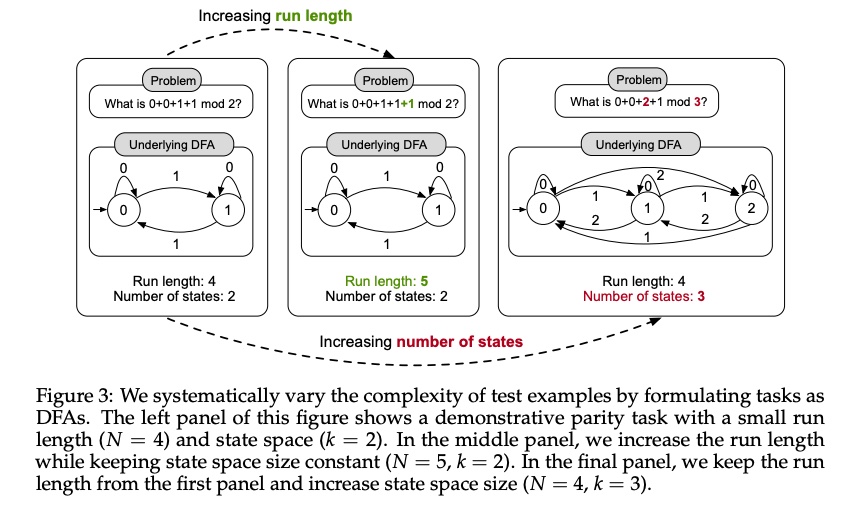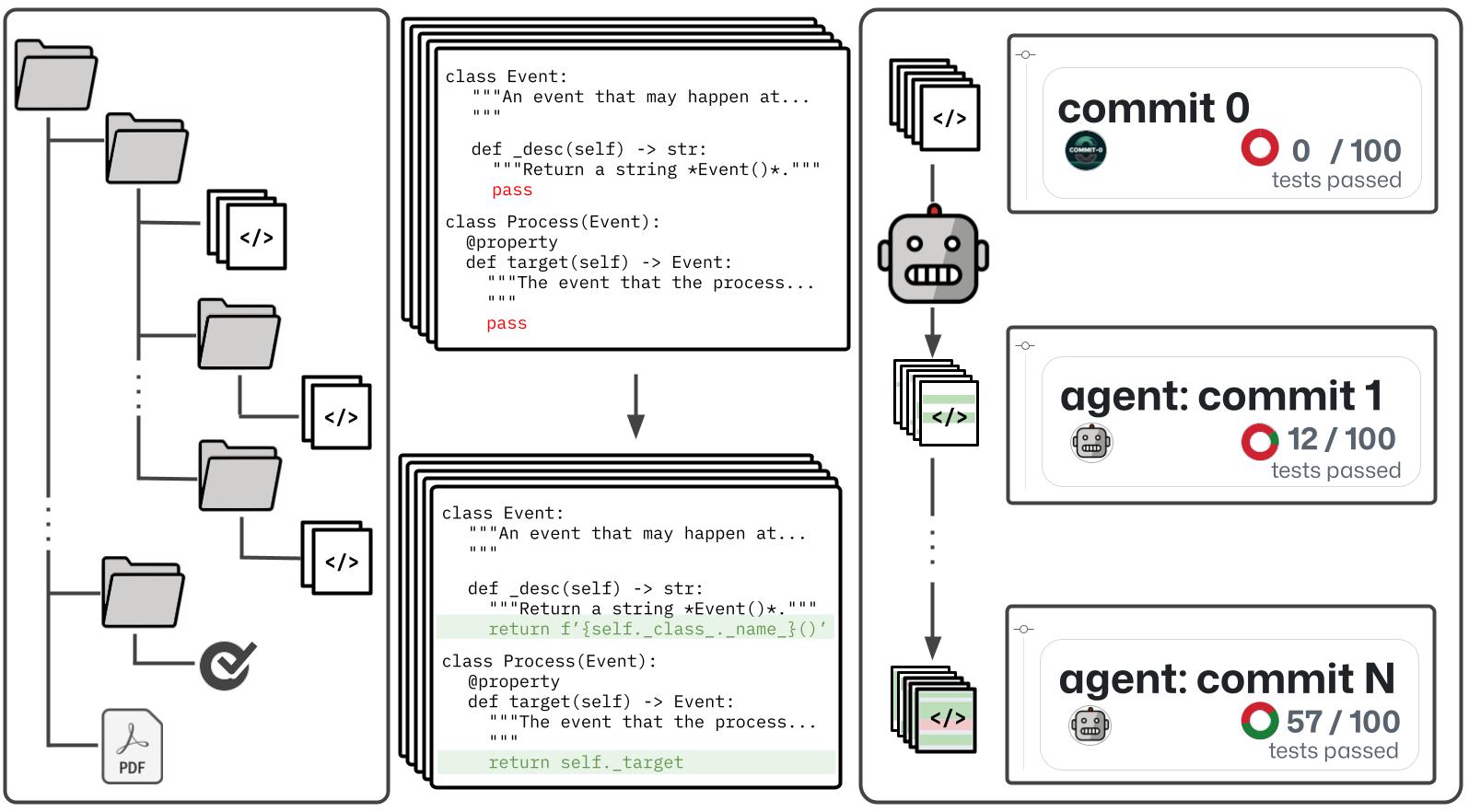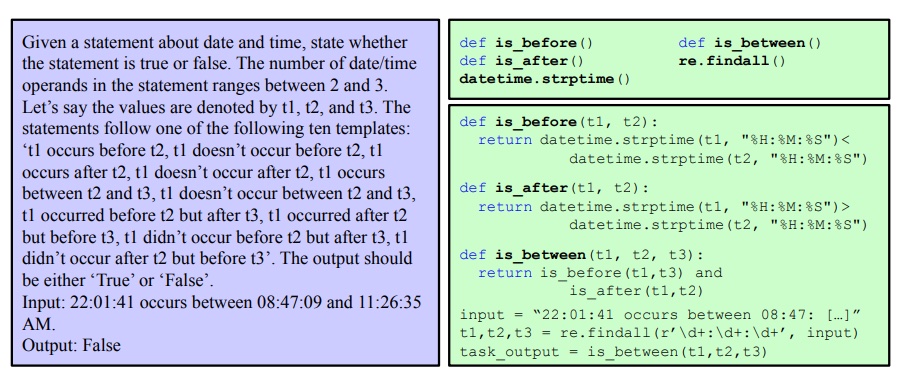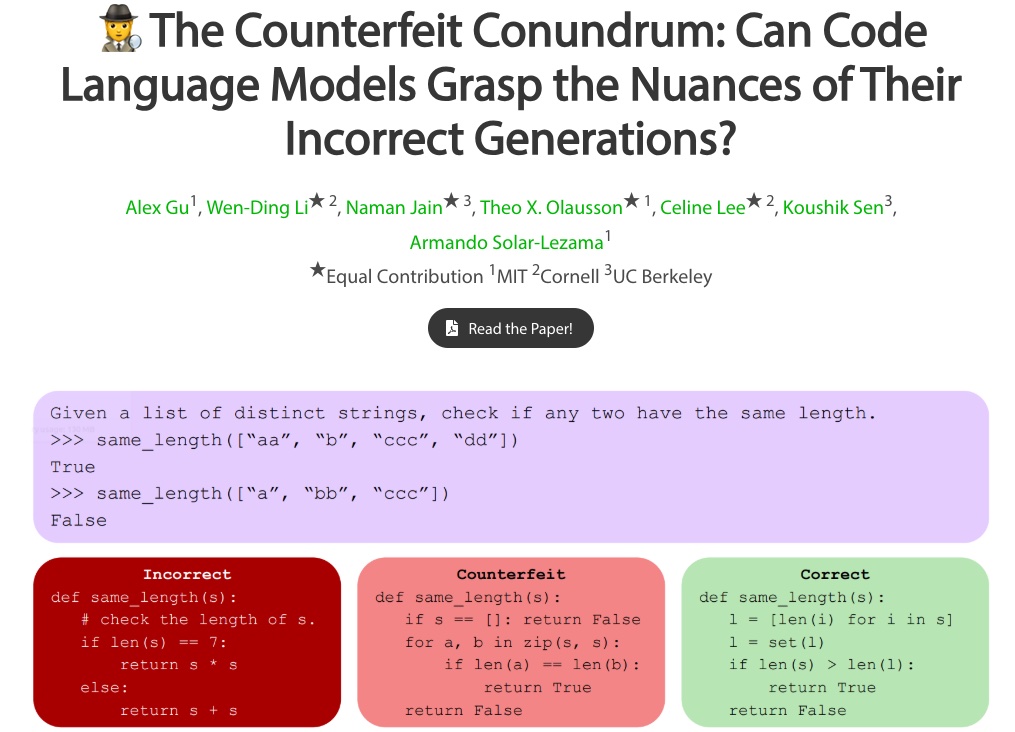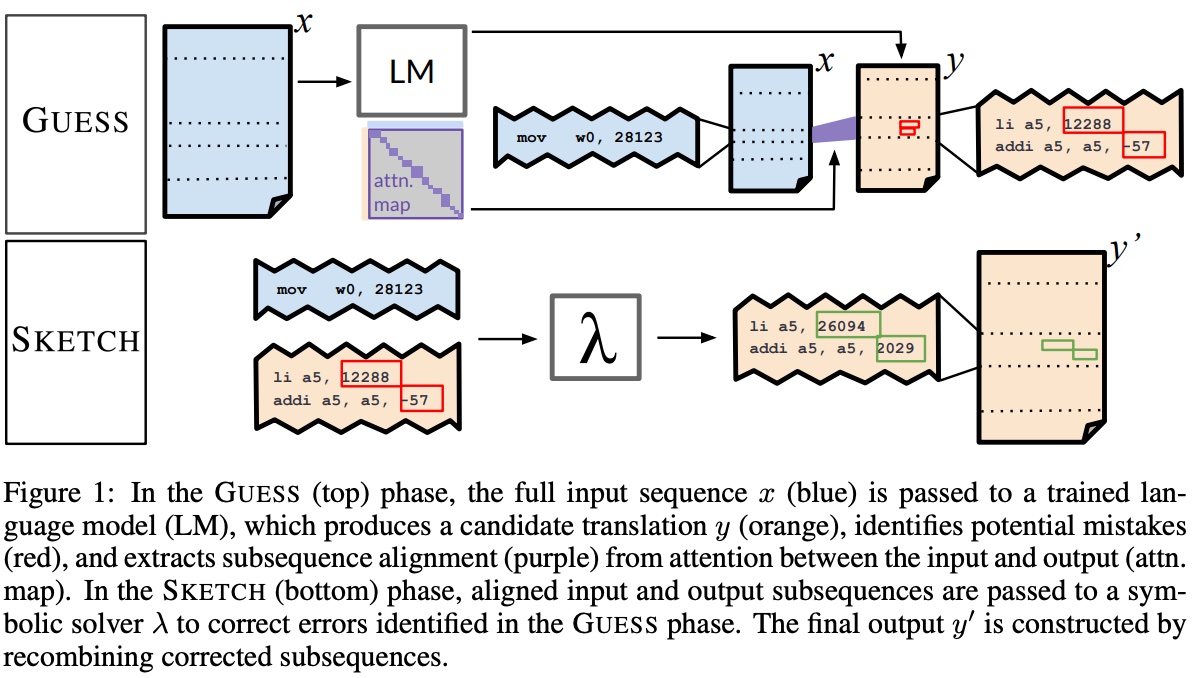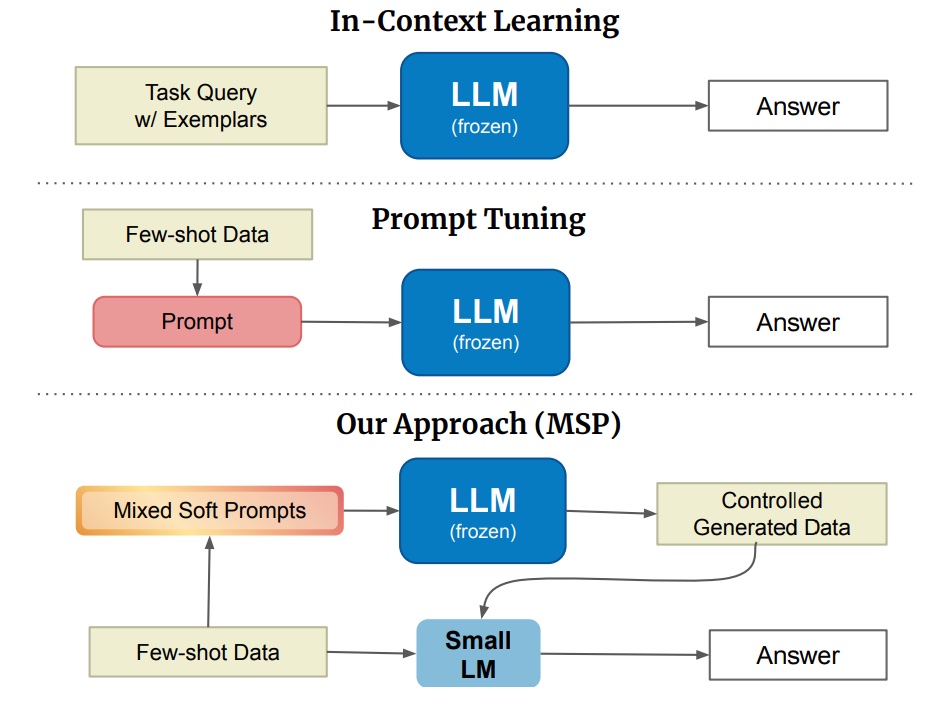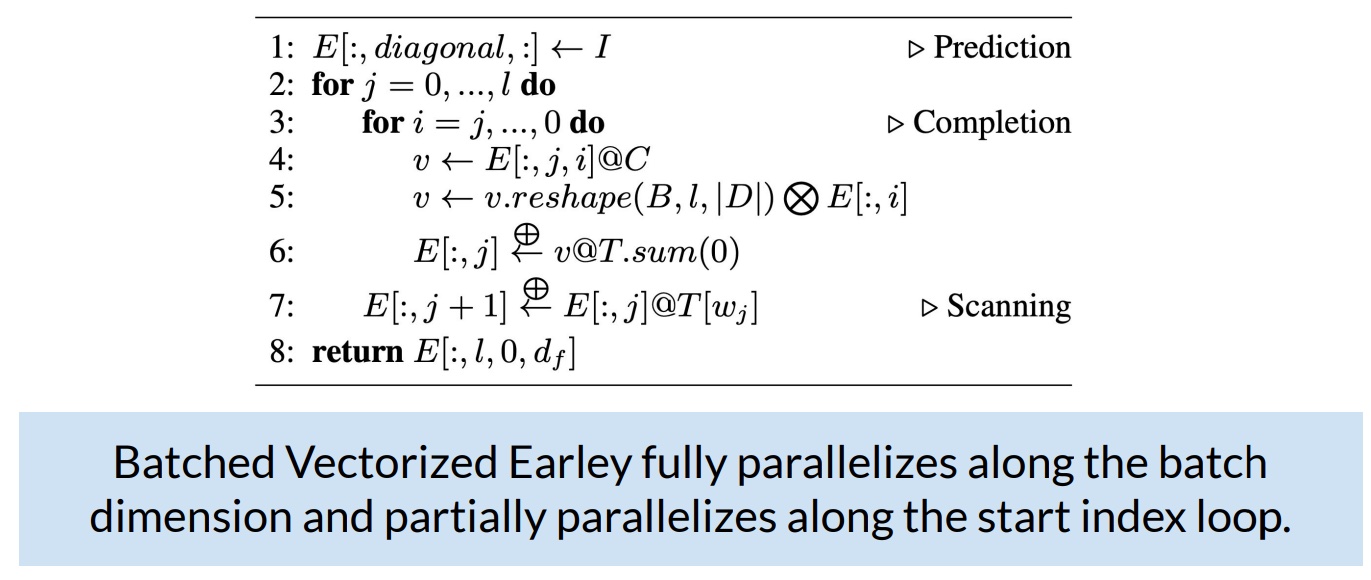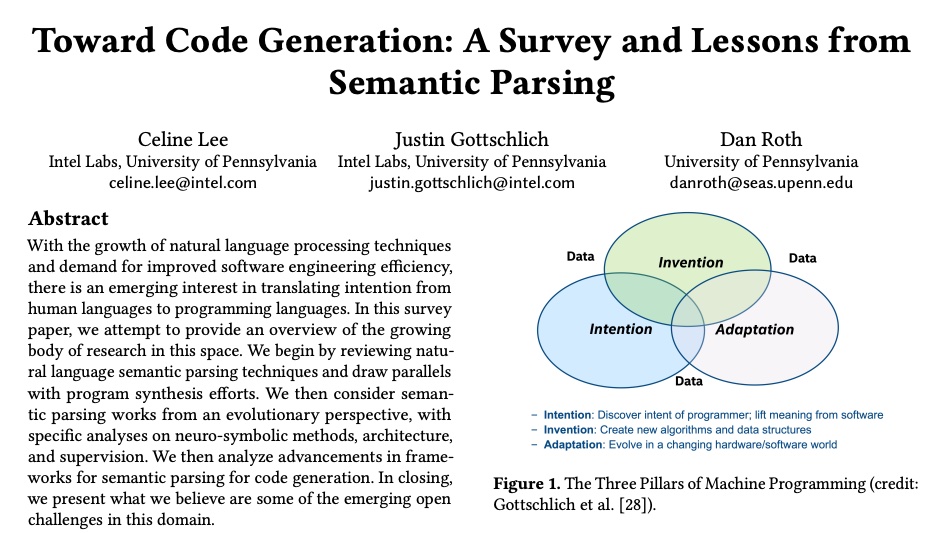Celine Lee |
| PhD candidate @ Cornell University, advised by Sasha Rush. I work on language modeling, with a special focus on code reasoning and generation. |
| Currently (Summer 2025): Student Researcher @ Google Deepmind |
| Previously: BSE & MSE @ University of Pennsylvania, 2020, where I worked with Dan Roth and Justin Gottschlich. |
| My CV and my Google Scholar. |
